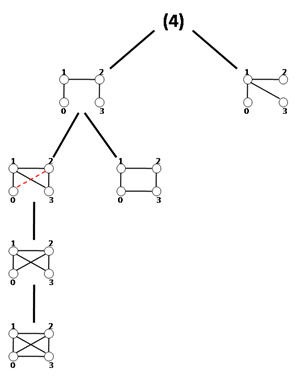Network motif
Network motif refers to recurring, significant patterns of interconnections occurring in complex networks at numbers that are significantly higher than those in randomized networks. These motifs are considered the building blocks of complex networks, including biological networks, social networks, and technological networks.
Overview[edit | edit source]
Network motifs are small subgraphs, typically consisting of 3 to 8 nodes, that appear more frequently in a given network than would be expected in a random network of the same size and degree distribution. The study of network motifs helps in understanding the structural and functional properties of complex networks.
Types of Network Motifs[edit | edit source]
Network motifs can be classified based on the type of network they are found in:
- Feed-forward loop: A common motif in gene regulatory networks where a gene regulates a second gene, and both jointly regulate a third gene.
- Bi-fan motif: Often found in protein-protein interaction networks, where two proteins interact with two other proteins.
- Triadic closure: Common in social networks, where if two people have a common friend, they are more likely to become friends themselves.
Applications[edit | edit source]
Network motifs have applications in various fields:
- Systems biology: Understanding the design principles of biological networks such as metabolic networks and signal transduction pathways.
- Neuroscience: Analyzing the connectivity patterns in neural networks.
- Sociology: Studying the structure of social networks to understand social dynamics and influence.
- Engineering: Designing robust and efficient communication networks and transportation networks.
Identification of Network Motifs[edit | edit source]
The identification of network motifs involves the following steps:
1. Network Construction: Building the network from empirical data. 2. Subgraph Enumeration: Counting all possible subgraphs of a given size. 3. Random Network Generation: Creating randomized versions of the original network to serve as a null model. 4. Statistical Analysis: Comparing the frequency of subgraphs in the original network to those in the randomized networks to identify significant motifs.
Significance[edit | edit source]
The presence of network motifs indicates non-random structural features that can provide insights into the underlying principles governing the network's formation and function. For example, the prevalence of feed-forward loops in gene regulatory networks suggests a mechanism for filtering out noise and ensuring robust gene expression.
See Also[edit | edit source]
References[edit | edit source]
External Links[edit | edit source]
Search WikiMD
Ad.Tired of being Overweight? Try W8MD's physician weight loss program.
Semaglutide (Ozempic / Wegovy and Tirzepatide (Mounjaro / Zepbound) available.
Advertise on WikiMD
|
WikiMD's Wellness Encyclopedia |
| Let Food Be Thy Medicine Medicine Thy Food - Hippocrates |
Translate this page: - East Asian
中文,
日本,
한국어,
South Asian
हिन्दी,
தமிழ்,
తెలుగు,
Urdu,
ಕನ್ನಡ,
Southeast Asian
Indonesian,
Vietnamese,
Thai,
မြန်မာဘာသာ,
বাংলা
European
español,
Deutsch,
français,
Greek,
português do Brasil,
polski,
română,
русский,
Nederlands,
norsk,
svenska,
suomi,
Italian
Middle Eastern & African
عربى,
Turkish,
Persian,
Hebrew,
Afrikaans,
isiZulu,
Kiswahili,
Other
Bulgarian,
Hungarian,
Czech,
Swedish,
മലയാളം,
मराठी,
ਪੰਜਾਬੀ,
ગુજરાતી,
Portuguese,
Ukrainian
Medical Disclaimer: WikiMD is not a substitute for professional medical advice. The information on WikiMD is provided as an information resource only, may be incorrect, outdated or misleading, and is not to be used or relied on for any diagnostic or treatment purposes. Please consult your health care provider before making any healthcare decisions or for guidance about a specific medical condition. WikiMD expressly disclaims responsibility, and shall have no liability, for any damages, loss, injury, or liability whatsoever suffered as a result of your reliance on the information contained in this site. By visiting this site you agree to the foregoing terms and conditions, which may from time to time be changed or supplemented by WikiMD. If you do not agree to the foregoing terms and conditions, you should not enter or use this site. See full disclaimer.
Credits:Most images are courtesy of Wikimedia commons, and templates, categories Wikipedia, licensed under CC BY SA or similar.
Contributors: Prab R. Tumpati, MD





